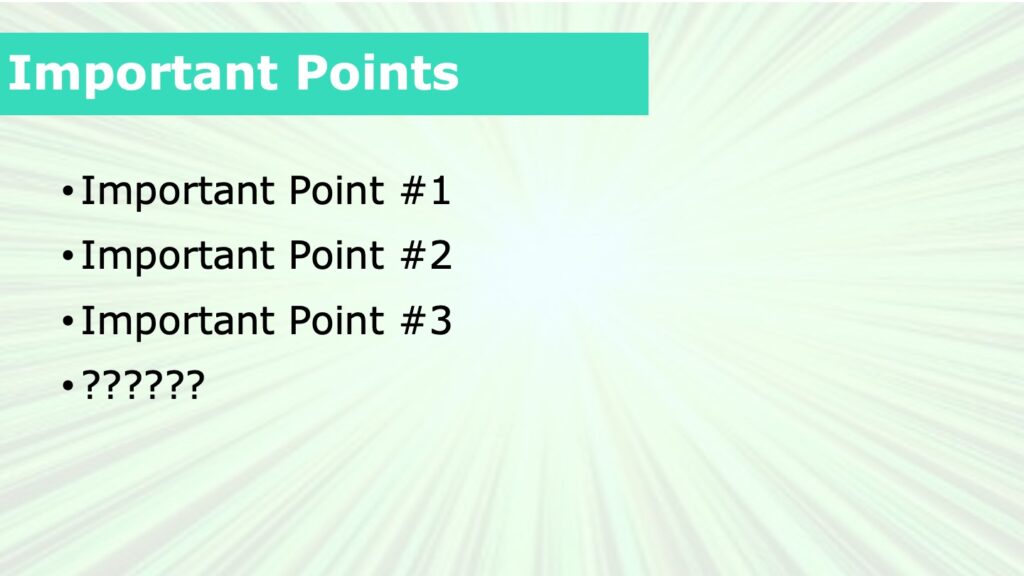When you’re willing to bend (or break) the mold, here are a few helpful tips to keep your audience engaged.
Most of the tips I write apply to all presenters. But here are a few more daring tips that may appeal to you. The more confident you are in your ability to “own the room,” the more likely these tips can work for you.

1. Stand. Even if the presentation is virtual and all other presenters are sitting.
When you’re standing, you tend to have better posture, better breathing – you are by definition less relaxed than when you’re sitting. And you don’t want to be relaxed when giving a presentation – you want to be fully energized and aware. This standing energy is contagious – the audience feels more excited about your presentation, which is much better than your audience being relaxed and one step away from sleepy or bored.
Also, standing allows you the freedom to more easily use your arms, hands, and feet (walking) when making your points.
Lastly, standing signals a sense of urgency – like a plane about to leave the gate. And of course you want your audience to feel the urgency of the opportunity to invest in you and your idea.
There is a downside to standing. With a virtual presentation, it’s harder to set up your logistics so that you can stand. Most laptop cameras are designed for you to be sitting. Sometimes the room that you’re in is set up for a tight shot of just your head and not a wider shot. But these can be overcome with a little ingenuity – for instance a shoebox as a laptop platform can often solve the problem. In fact, some of the more recent hardware, like Apple’s Center Stage, lets the camera follow you, so you can even take a few steps left or right and still be in the center of the view.

2. Leave it out so you can put it in.
If the presentation scenario includes a Q&A session after your presentation, consider leaving out something positive, especially a marketing, sales, or team area that may produce a question during the Q&A.
When you get a question that is in the general area of the left-out point, you answer the question and then add “and I should also mention. . .” and make the left-out point.
You do this because you want to project that there is so much good news, so many positive aspects to the company and its prospects, that you just can’t track them all. The impression is that there are other great things about your company that you also haven’t mentioned – and investors will want to hear more.
For example, you recently landed three very significant and important sales deals. You highlight two of them in the presentation. Then when you get any question relating to marketing or sales, you answer the question and then add “and I should also mention, we just signed a large contract with XYZ which will not only be very profitable, but may lead to an even larger contract.”
The seeming risk this strategy is that you won’t get any questions related to the point you want to make. In this case, just before your time is up you can still make the point you want to make with an “And another thing I should mention” introduction.

3. “Harry Potter” your Team slide.
Every presentation has a team slide and they are all, well, nearly the same. Your team slide can stand out if you invest in making a looped video of each team member, so that they come to life, like a Harry Potter wizard portrait, by moving a bit while you are describing each individual. If you want to get fancy, use a build effect so that only the person you’re describing is moving.



0 Comments